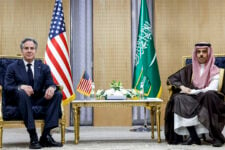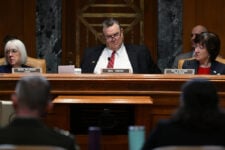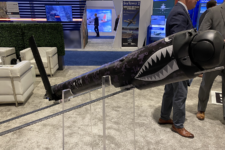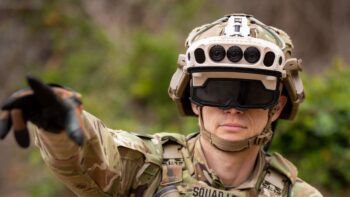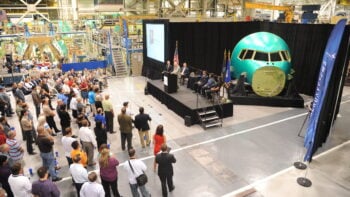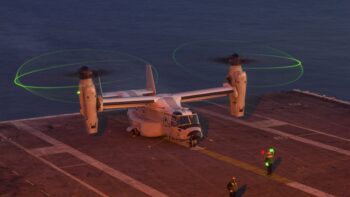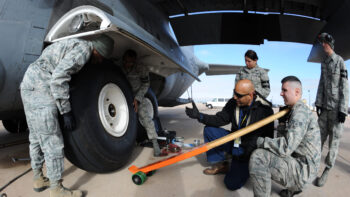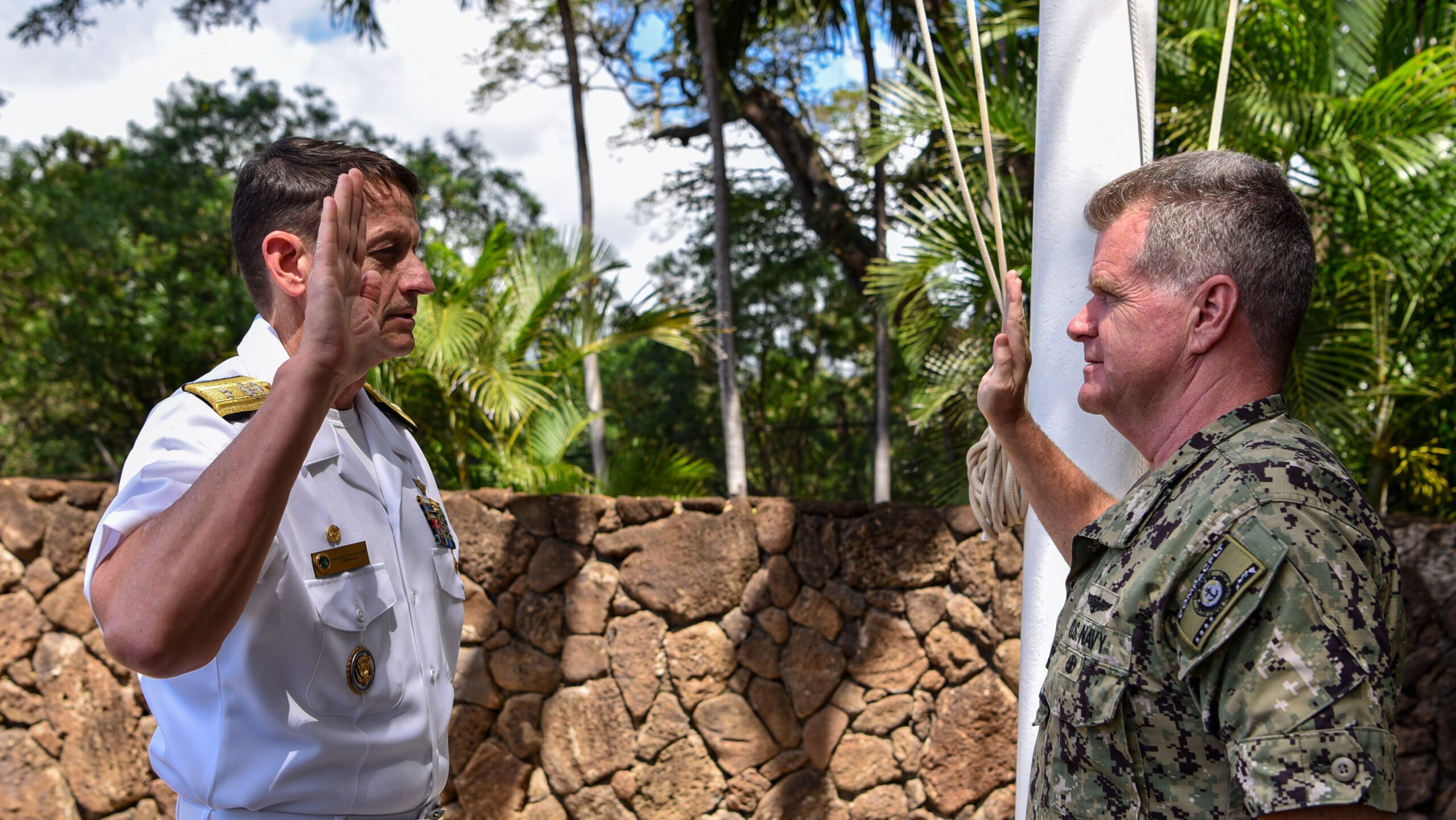
Rear Adm. Greg Huffman (left) recites the oath of office during a ceremony administered by Adm. Samuel Paparo, currently the commander of US Pacific Fleet on April 3. Huffman will assume a new role to lead the activation of Joint Task Force-Micronesia. (US Navy/2nd Class Jeremy R. Boan)
WASHINGTON — While the Pentagon is standing up a new Joint Task Force-Micronesia under the direction of a two-star admiral, Defense Secretary Lloyd Austin told lawmakers his team is still studying the pros and cons of a regional, operational joint force headquarters.
“What I’ve asked my team to do is look at this and do an assessment to make sure that we get it right, and we understand the operational and cost issues,” Austin told members of the Senate Armed Services Committee today.
“They are doing that, and they’ll come back to me shortly on that … in a couple of weeks,” he later added.
As the Biden administration eyes China as its top military competitor and crafts contingency plans for that region, lawmakers have been drawing attention to a divide over the Pentagon’s new Joint Task Force-Micronesia and a Congressional mandate for an operational joint force headquarters.
The spilt stems, in part, from a provision in the fiscal 2023 National Defense Authorization Act (NDAA), mandating Pentagon leaders to establish a joint force headquarters inside the Indo-Pacific Command area of operations. That headquarters was to be a sub-unified command, or similar entity, assuming the command-and-control responsibility for contingency responses throughout the region [PDF].
But since then, the Pentagon has greenlit the creation of the Joint Task Force-Micronesia, and earlier this month, Rear Adm. Greg Huffman was named to lead the new outfit from Guam. While the department didn’t respond to questions about Huffman’s mandate, the photo press release said his task force is responsible for the homeland defense of Guam, the US Commonwealth of Northern Mariana Islands, Federated States of Micronesia and the Republic of Palau. The new task force, it added, will also provide defense support to civil authorities, along with humanitarian assistance.
But lawmakers have said that’s not what they had in mind when they penned the FY23 NDAA.
Senate authorizers, for example, previously said they were concerned the Joint Task Force-Micronesia is too narrowly focused on providing mission support and will not satisfy the requirement for an operational joint force headquarters [PDF]. On the other hand, the proposed operational joint force headquarters would integrate Joint All-Domain Command and Control efforts with mission command and control, as well as new capabilities like the Defense Advanced Research Projects Agency’s (DARPA’s) Assault Breaker II designed to create a common data layer.
When Congress approved its final version of the FY24 NDAA in December 2023, they directed Austin to provide oversight committees with an update the implementation plan to include: the personnel, supporting infrastructure, and operational chain of command relationships; address what is needed for the “potential establishment” of an additional, fully equipped and persistent joint force headquarters; and identify just what rank the commander should be. (Today Austin did not disclose if the ongoing analysis is tackling all of those topics.)
Members of the Senate Armed Services Committee, including its top ranking Republican, Sen. Roger Wicker, continue to raise the issue including in today’s hearing on the department’s FY25 budget request. The divide was also raised in February when Adm. Samuel Paparo headed to Capitol Hill for his nomination hearing to take the reins as the next head of the Indo-Pacific Command.
In written questions given to the four-star flag officer ahead of his hearing, lawmakers asked about his understanding of the operational joint force headquarters mandate and how it relates to the Joint Task Force-Micronesia.
“My understanding is that the… National Defense Authorization Act required the creation of an operational Joint Task Force to integrate joint, all-domain command and control effects in the Indo-Pacific theater, to deter aggression, and, if necessary, to fight and win in conflict,” Paparo wrote.
“If confirmed, I will assess all options and make appropriate recommendations to meet the intent of the NDAA as informed by the capabilities and actions of our adversaries, the strategic and operational environments, and our own strengths, weaknesses, and posture,” he later added.
The Senate has since confirmed his nomination.



